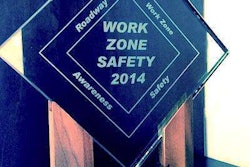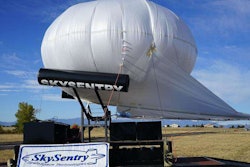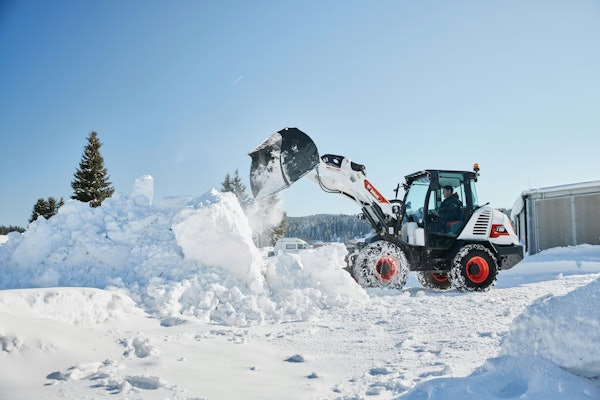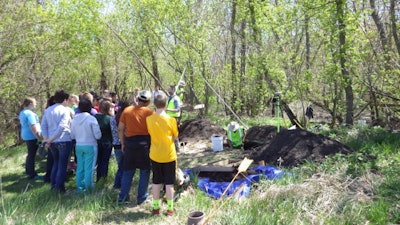 IDOT’s Brennan Dolan talks to Belmond-Klemme school students about archeology and how it relates to highway projects.
IDOT’s Brennan Dolan talks to Belmond-Klemme school students about archeology and how it relates to highway projects.
A proposed Iowa Department of Transportation (IDOT) project involving bridge replacement, intersection updates and overflow culvert is being used in educational efforts to impress upon fifth and sixth graders the importance of preservation of historical artifacts found at work sites.
The project, located on U.S. 69 near Belmond, is near the outdoor classroom of the Belmond-Klemme Community School where the schoolchildren attend. An archeological study in 2014 found Native American artifacts, which resulted in more historical investigation at the beginning of the 2015 construction season. The project is scheduled to begin construction in 2019.
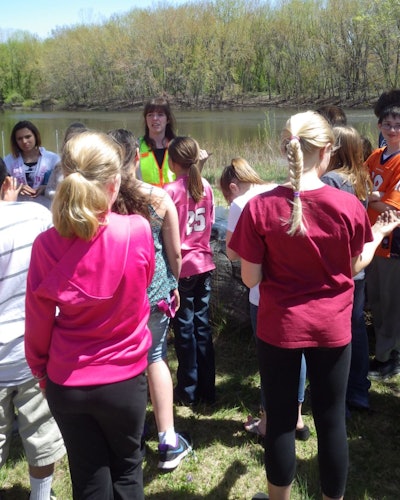 Lindsay Edgar, IDOT Wetland Biologist talks to students about wetland preservation efforts.
Lindsay Edgar, IDOT Wetland Biologist talks to students about wetland preservation efforts.“It’s not often that an archeological research site would be so accessible to these kids,” said IDOT Cultural Resources Manager Brennan Dolan. “We also thought it made sense to bring in Iowa DOT Wetland Biologist Lindsay Edgar to give students a broad understanding of the science we use to research, minimize, and mitigate any environmental impacts that a construction project might have.”
“With the state’s emphasis on science, math, engineering, and technology, often referred to as STEM, we thought this would be a great way to show the kids how we use science every day in a way they might not expect,” Edgar said. “It gave us the chance to show them how the Iowa DOT unearths history during these archeology studies and protects our natural resources by studying the water, soil, and animal and plant life near the proposed highway project.”
Students, led by Edgar, were able to investigate flora via an ad-hoc research station set up near a pond at the site.
“During the session, we talked about basic wetland science and what elements are necessary to call an area a wetland,” she said. “The kids were able to get right in and have a hands-on experience. They asked a lot of great ‘What happens when …’ questions that gave me a chance to explain what we do to lessen the environmental impact of a project.”
Edgar set up a mini-research station beside a pond near the archeological site. The students used magnifying glasses to look at flowers, grasses, and leaves found in the area.
Edgar said, “During the session, we talked about basic wetland science and what elements are necessary to call an area a wetland. The kids were able to get right in and have a hands-on experience. They asked a lot of great ‘What happens when …’ questions that gave me a chance to explain what we do to lessen the environmental impact of a project.”
Dolan focused on the archeological angle and said the kids were asking “good questions” regarding historical and cultural resources. “They had been studying ancient history and said they thought it was cool that there was ancient history right in their own outdoor classroom,” he said. “They wanted to know how we can tell the age of an artifact or the soil in an area. They seemed really interested in the science that goes along with field investigations.”




